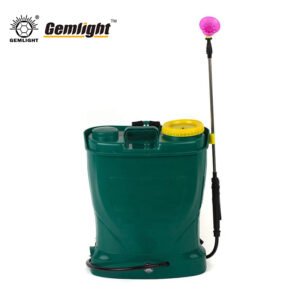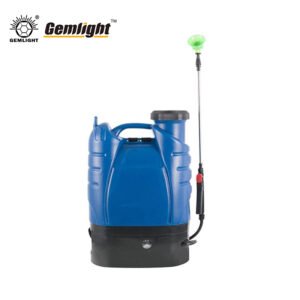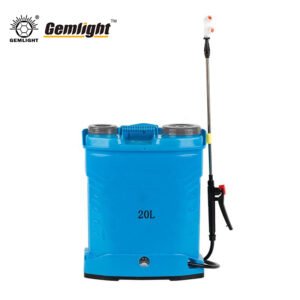5 core advantages of using an iron rake in the garden
In the springtime world of gardening, a competent tool can often make the maintenance work twice as effective.
As a low-key but practical “all-round helper” in the garden, the rake is becoming an essential piece of equipment for gardening enthusiasts thanks to its unique structural design and multifunctional properties.
This article will be from the soil optimization, debris cleanup, seeding preparation, landscape shaping, cost control of five dimensions, in-depth analysis of the core value of the use of iron rake in the garden, to bring you to re-understand the modern gardening charm of this traditional tool.
1,Deeply improve soil structure, activate root growth environment
The tine structure of the iron rake is a natural soil conditioner. When tilling the garden, the rake will be 10-15 centimeters deep into the soil, through the back and forth pushing and pulling action, can effectively break the soil crust layer, so that the original compact soil becomes loose and porous.
This process not only increases the permeability of the soil, so that the root system can get more oxygen, but also improves the water infiltration efficiency, avoiding the root rot caused by stagnant water.
For gardens with a high proportion of clay, the spacing of the teeth of the rake (usually 3-5 cm) when mixing humus or perlite ensures that the amendments are evenly distributed, avoiding the unevenness of manual mixing. Data show that the microbial activity of soil treated with iron rake can be increased by 27%, creating a more fertile micro-ecological environment for plant growth.
2, efficiently clean up garden debris, maintain landscape cleanliness
Autumn leaves flying or spring weeds sprouting, rake is the ideal tool to clean up the garden surface debris. Its dense rake teeth (common specifications for 12-16 teeth / row) can quickly gather fallen leaves, dead grass, broken branches and other debris, compared with the efficiency of picking up with bare hands increased by 5-8 times.
In areas of excessive moss growth, the rake can be used to gently scrape the surface horizontally to remove moss colonies without damaging shallow-rooted plants. When removing gravel or stubble, the teeth of the rake effectively filter out small debris, leaving a clean and flat planting surface.
It is worth noting that the choice of iron rake with rounded teeth (such as plastic-plated treatment models) can avoid scratching in the operation of the stone road or wooden platform, reflecting the detailed consideration of the use of tools.
3, the precise creation of sowing seedbed, enhance the seed germination rate
seedbed preparation before sowing directly affects the germination effect, the iron rake in this link shows a unique advantage.
By adjusting the angle of inclination of the rake (45° angle is recommended), the surface can be easily raked into a shallow furrow 1-2 cm deep, providing an ideal sowing environment for small seeds (e.g. cosmos, petunia).
For grass seeds that need to be spread evenly, raking the surface lightly with a rake to create a rough surface, then sowing the seeds and applying light pressure with the back of the rake to cover the soil, allows the seeds to be in close contact with the soil and improves the germination rate by about 18%.
When transplanting seedlings, the rake can also be used to divide the planting area, through the rake teeth to draw a straight line or arc, to create a neat and beautiful layout of the seedbed, both practical and ornamental.
4, shaping the three-dimensional landscape level, realize the horticultural aesthetics upgrade
Iron rake is not only a practical tool, but also a creative medium for landscape shaping. In laying mulch (such as wood chips, pebbles), the use of wide-toothed iron rake (teeth width ≥ 8 cm) can evenly spread the material to form a uniform thickness of the mulch layer, not only to inhibit the growth of weeds, but also to add a sense of visual hierarchy.
In sandy or gravel gardens, the design of the rake marks (e.g., radial, wavy patterns) creates a dynamic visual effect, and together with ornamental grasses or succulents, it creates a Zen-like atmosphere of Japanese-style withered landscapes.
For sloping gardens, the use of rakes along the contour raking can form shallow ridges to prevent soil erosion, while providing terraced growth space for groundcover plants to enhance the richness of the three-dimensional landscape.
5, economic durability cost-effective, reduce long-term maintenance costs
Compared with electric gardening tools, iron rake has significant cost advantages.
One-time purchase of high-quality iron rake (such as carbon steel forging + solid wood handle models, the price of about 80-150 yuan), the normal use of life up to 5-10 years, without additional consumables or energy input.
In terms of maintenance, all that is needed is to regularly apply anti-rust oil and check the tightness of the handle connections to maintain good performance. For small and medium-sized gardens, the rake can replace part of the function of soil turners and looseners, reducing the waste of idle equipment.
From an environmental point of view, the powerless design avoids carbon emissions, in line with the sustainable concept of modern gardening, especially suitable for eco-friendly home gardening scene.
Conclusion: Let the rake become a smart choice in the garden
From soil to landscape, from seeding to cleanup, the rake redefines the boundary of the value of gardening tools with its simple but powerful functions.
Choosing a suitable rake (it is recommended to choose the width of the rake surface according to the size of the garden: ≤30 cm for small gardens, 30-50 cm for medium-sized gardens) and mastering the correct use of skills can not only improve the maintenance efficiency, but also find more creative possibilities in the interaction with the garden.
Whether you are a novice or a senior gardener, the rake can be a bridge between nature and craftsmanship, so that every time you bend down to labor become a deep nourishment for the garden.





